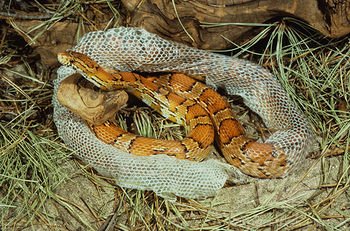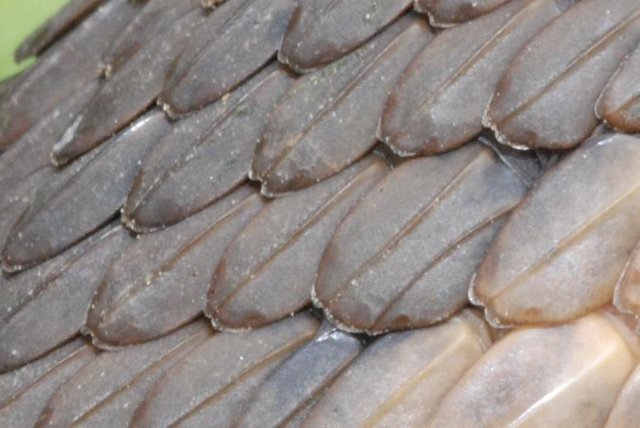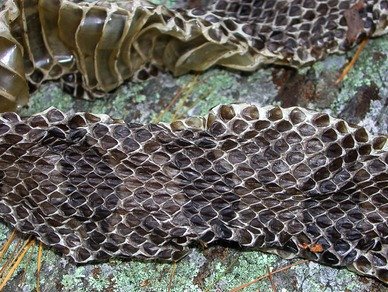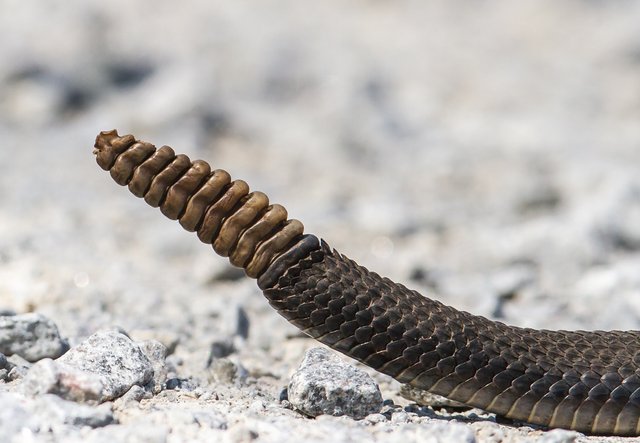Identifying Snakes by Their Shed Skins
We like to believe that snakes and their reptilian kin only reside in the deep woods, and are highly unlikely to turn up around our homes and communities. Unfortunately for some homeowners, snakes are all to common even in residential neighborhoods, where they are drawn in by the prospect of easy prey. The rodents that take shelter in our homes, garages and sheds/barns are a bountiful feast for any serpents that happen to come upon them. For mouse-infested homes, it's only a matter of time before a snake takes residence as well.
Many of these silent invaders go undetected, preferring to avoid confrontation with a human if possible. Though snakes rarely leave any trace of their presence, there is something they leave behind that is a dead giveaway: their shed skins. All snakes go through a process called ecdysis, in which they shed all their outer skin at once in order to continue growing (also to heal injuries and rid themselves of external parasites). This process may be repeated as infrequently as a couple times a year to a couple times a month depending on their food access and growth rate. When homeowners come across these sheds, many are faced with panic; who knows what kind of (potentially dangerous) snake could be dwelling in or around their home? Fortunately, there are ways to identify snakes by their sheds, and determine whether or not they pose a risk to you without even seeing the snake! This post will lay out a few suggestions to help you identify a snake from its shed.* Be sure to have a local snake guide handy; you will likely need it for reference and comparison!

1. Look at the length: How big is the shed? Here in Virginia, we have snakes ranging from 4 inches to almost 8 feet in length! A large shed will easily eliminate quite a few choices as you can immediately rule out the smaller species native to your area. Keep in mind, a snake's shed is often a great deal longer than the snake that shed it (so don't freak out if it seems insanely huge!); this is because the skin that is shed covers the top and bottom of each scale, and it much longer when stretched out (assuming the skin is shed intact, each scale is unwrapped on the top and bottom side of the scale which, in some cases, almost doubles the length of the shed skin). If the shed is small, don't immediately rule out the large snakes however; you could be dealing with a hatchling or juvenile and not necessarily a small-bodied species.

2. Look at the girth: To start identifying whether or not the snake may be potentially dangerous, you can look at the overall girth of the shed. Here in Virginia (and a decent portion of the United States), most of our non-venomous species of snakes are long and thin, while the venomous pit-vipers are shorter and thick-bodied (see the picture below). Cross reference your findings with a snake guide to your region (does the snake have the build of a native harmless species or venomous one). This rule doesn't work every time; venomous species like coral snakes and cobras are also long and thin, and harmless species like hognose snakes may be shorter and stouter, however species range maps will help you determine which snakes are native to your particular area and need to be considered.

3. Check under the tail: This is another trick meant to distinguish pit-vipers from other species, but it may help narrow down your options (VA's only venomous species are pit-vipers, so if they don't bear this characteristic, I know it isn't venomous). Look at the ventral (belly) scales near the tail. Venomous pit-vipers have a single row of scales under the tail while native nonvenomous species have a double row of scales. If you see the single row, you know conclusively that this is a pit-viper such as a copperhead, cottonmouth or rattlesnake. If you see the double row, it is most likely nonvenomous HOWEVER some species, like cobras and coral snakes, also bear the double rows of scales (again, check which species are native to your region). (In the photo below, the viper is on top, the nonvenomous species on the bottom).

4. Check for keels: Some snakes have smooth scales, other have keeled scales. Keeled scales have a single ridge running down the center of each scale, named because it resembles the keel of a boat. This is an adaptation for camouflage; smooth scales easily reflect light and are quite shiny, while the keel breaks up the reflection of light from each scale, allowing the snake to blend in better (this is why a corn snake looks shiny while a copperhead is very dull). Many guides will list whether snakes in your area have smooth, weakly keeled or prominently keeled scales, further narrowing your search.


5. Look for obvious patterns: Sheds are largely translucent and dull, having lost virtually all its color, however patterns often remain. Stripes, spots, bands, chevrons and other distinct markings often remain on sheds and can easily tie the shed back to a particular snake species. These patterns may be faded, so it may be easier to hold the shed up to a light to look for observable patterns. Even an absence of these patterns provides information; the snake was likely a solid color with no distinct markings. Check a guide for patterns that may match those of the shed.

6. Does the tail end at the tip? This won't really narrow the search down to a particular species but it will answer one question: is it a rattlesnake or not? Non-rattler species will have (most likely) an intact tail with a tip, however rattlers sheds stop abruptly at the tail. The rattle of the rattlesnake is not shed, so if your snake shed has an intact tail, you can at least rule out one suspect.

7. Seek out help from an expert: Not all sheds can be easily identified, especially by individuals with little herpetological experience (and some people just don't want to mess with the shed skins). Even under the best circumstances sheds can be tricky; if they are damaged or otherwise compromised, it may seem almost impossible to narrow down the suspects. Don't give up hope though! Many herpetologists are trained to identify snakes by their sheds, and in addition to identifying your new resident, they can often provide crucial information about living with the snake or how to safely get rid of it.

Identifying snakes by their sheds is largely a process of elimination. Though tricky for sure, with a little practice it can be done quite easily. Take note of important characteristics like keeled scales and unusual patterns; they can be incredible useful when it comes to identifications. Even if you never see a snake, I advise you to buy or download a guide to the snakes found in your region (always good to know what lives in your neighborhood!). Snake skins may seem a little gross, but you can think of them as gifts: they are like little clues to the snakes identity and can save you the trouble of being surprised by a snake or getting too close to one trying to identify it!
*This post is largely focused around identifying North American snakes, so these rules may not apply to your location 100%. However, many of the same tactics can be used to narrow down the possibilities, and with a regional snake guide, you should still be able to at least determine if the snake is harmless or potentially dangerous.